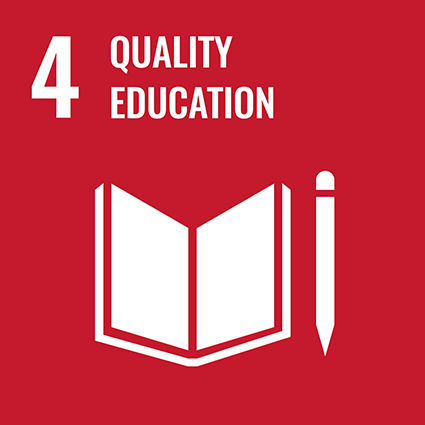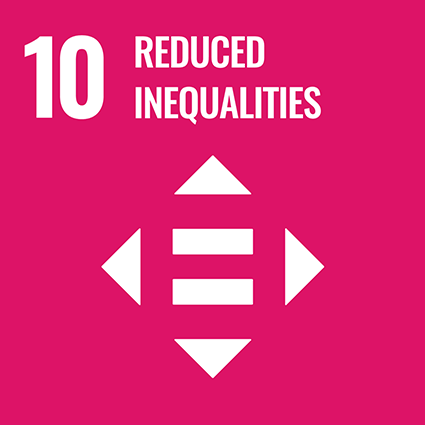Founded in New York City in 1923, TIME was the first weekly news magazine in the United States. This influential, century-old publication covers a wide range of topics, such as politics, science, culture and technology, but its most famous feature is its annual Person of the Year award. This award goes to someone who, according to the editors, “has done the most to influence the events of the year.” Except for Greta Thunberg who was 16 when she won in 2019, all winners have been adults. Yet, the editors of TIME are convinced that “youth is no impediment to achievement,” so, in 2020, they created a Kid of the Year award. The prize is for kids aged eight to sixteen who have made positive contributions in areas like science, social justice or the environment.
Past winners
The first winner of the Kid of the Year award was 15-year-old Gitanjali Rao, an American girl of Indian descent. She invented a device to detect lead in drinking water, as well as an app to spot cyberbullying. The second winner was 11-year-old Orion Jean, who started the “Race to Kindness”, a campaign encouraging people to get involved in charitable community projects, such as donating toys to children in hospitals and providing meals for people in need. The third winner was 10-year-old Bellen Woodard, nicknamed the “world’s first crayon activist,” for her “More Than Peach” project. For Bellen it all began when one of her classmates asked her for the ’skin colour’ crayon. Realizing there wasn’t one for her own dark skin, Bellen created a set of crayons representing different skin tones to promote representation and inclusivity in schools.
TIME’s Kid of the Year 2024
This year’s winner is 15-year-old Heman Bekele. Heman’s parents are Ethiopian, and he was born in Addis Ababa. When he was 4 years old, his parents decided to emigrate to give their children a better future. When they reached the United States, Heman already had a passion for science. He loved experimenting, making ‘potions’ with everyday household items, such as dish soap and laundry detergents. One day, he concocted a mix that, he hoped, would produce unlimited, clean energy, but instead it nearly started a fire. That didn’t stop him. He toyed with new ideas. After reading about a cream containing a drug used to treat skin cancer, he began to wonder if there was a more efficient, and cheaper, delivery system than cream. That’s when he thought of soap.
A life-saving soap
Heman began working on a soap that could treat skin cancer. He thought of a mixture of chemicals that would leave the medicine on the skin, even after the soap was rinsed off. His idea won a science competition and caught the attention of professional scientists. At a convention in Washington, D.C., he met a biologist from Johns Hopkins University who invited him to continue his research in the university’s laboratories. Today, Heman divides his time between school and lab. There’s still a long way to go before the life-saving soap is ready, but Heman is thrilled to think that one day his invention might help other people. “That’s the reason I started this all in the first place,” he stated.
Inspiration and hope
TIME’s award is helping to change people’s perception of what children can accomplish. Indeed, Heman and the other awardees are just a few of the many young people making a difference in the world. Kids like Gitanjali, Orion, Bellen and Heman are not only doing something practical and useful, but they are also inspiring peers and adults alike. They are not untouchable geniuses who can only be admired from a distance, but rather children with passion and determination that can be imitated. The message they convey is important in a time when the news is filled with tragedy and conflict, which often foreshadow a grim future. As TIME states, these kids “are not just examples of human attainment, but also reason to believe that the future they’ll lead will be a bright one.” Besides being an inspiration, they are also a symbol of hope.
1) Learn more about the iconic Person of the Year award:
https://en.wikipedia.org/wiki/Time_Person_of_the_Year
2) How are the Kids of the Year chosen? You can find out here:
https://time.com/7005486/kid-of-the-year-2024/
3) Are you interested in Orion Jean’s “Race to Kindess”? Check out its official website:
https://www.racetokindness.com/
4) Learn more about Bellen Woodard’s “More than Peach” project:
https://www.morethanpeach.com/
5) Read about Heman Bekele:
https://time.com/6996507/heman-bekele/
1) Read the article and complete the sentences with the correct alternative.
1. The Person of the Year award is
a. always won by adults.
b. never won by children.
c. mostly won by adults.
2. The Kid of the Year award is meant to prove that
a. kids are better than adults.
b. kids can achieve great things.
c. kids are as influential as adults.
3. The first winner of the Kid of the Year award
a. invented an app to spot cyberbullying.
b. donated toys to children in hospitals.
c. was the world’s first crayon activist.
4. All the winners of the Kid of the Year award are
a. young scientists and social activists.
b. engineers and influencers.
c. young scientists and engineers.
5. Heman’s parents are
a. American.
b. Ethiopian.
c. Indian.
6. When very young, Heman developed an interest in
a. chemistry.
b. engineering.
c. biology.
7. After the Washington convention, Heman began collaborating with
a. a soap manufacturer.
b. a university scientist.
c. a university engineer.
8. Heman’s research was motivated by his desire to
a. have fun.
b. become a famous scientist.
c. help others.
9. TIME’s Kid of the Year award is meant to
a. promote competition among children.
b. change people’s minds about what children are capable of.
c. promote the study of science and technology.
10. Heman and the other awardees serve as role models because
a. they possess qualities that others can imitate.
b. they are untouchable geniuses.
c. they are involved in doing something practical and useful.
VOCABULARY
2) Complete the sentences with the following words. Put the verbs and nouns in the right form, if necessary.
achievement * charitable * household * to concoct * to rinse off * awardee * peer * to foreshadow * grim * attainment
1. Winning the Nobel Prize was, without the shadow of a doubt, her greatest …………………….. .
2. The dark clouds on the horizon seem …………………….. an approaching storm.
3. You painted a really …………………….. picture of what happened. You’re such a pessimist!
4. He never uses a recipe book; he likes …………………….. his meals using whatever he finds in the fridge.
5. You’ve been playing outside, so you need …………………….. the dirt from your hands!
6. Our …………………….. includes five people and a dog.
7. The scientist shared her findings with her …………………….. at the science conference.
8. He’s a very …………………….. person. He recently donated books to the library and contributed to a reading programme for children.
9. The …………………….. thanked the applauding audience as she received her prize.
10. Her hard work led to the …………………….. of all her academic goals.
GRAMMAR – Present perfect of irregular verbs
3) Complete the sentences with the correct present perfect of the verbs in brackets.
1.TIME …………………….. (give) its famous award once a year since 1927.
2. She …………………….. (go) to many science fairs to showcase her inventions.
3. These young entrepreneurs …………………….. (think) of new ways to solve our environmental problems.
4. The winners of TIME’s prestigious award …………………….. (speak) about their dreams of making the world a better place.
5. Heman’s ideas …………………….. (catch) the attention of professional scientists.
6. We …………………….. (being) working on our school project.
7. People like Albert Einstein …………………….. (be) a source of inspiration to generations of scientists.
8. I …………………….. (meet) all the participants.
9. I …………………….. (know) her since I was a child.
10. I …………………….. (spend) countless hours doing research.
SHORT ESSAY
4) Who would you name “Person of the Year 2024”, and why? (60-80 words)
5) What do you believe is one of the most remarkable inventions of the last 100-150 years? Describe it and explain why you find it so significant. (60-80 words)
DEBATE
6) Pair up with one of your classmates and look at the proposition below; one of you will argue in favour of it and one of you against it.
Proposition: Children are better equipped than adults to address the problems of today’s world.
(Carlo Dellonte)
(Image: JNemchinova, istockphotos.com)



FRANCESCA
14 ottobre 2024 alle 13:26
Articolo molto interessante
MARIA DONATA DI BIASE
15 ottobre 2024 alle 11:22
Very interesting and useful
Angel Ruffolo
29 ottobre 2024 alle 20:34
Great article!
Silvana Simone
15 novembre 2024 alle 18:22
Interesting and very useful. Thanks